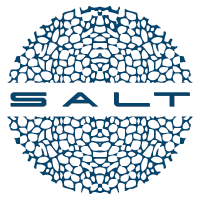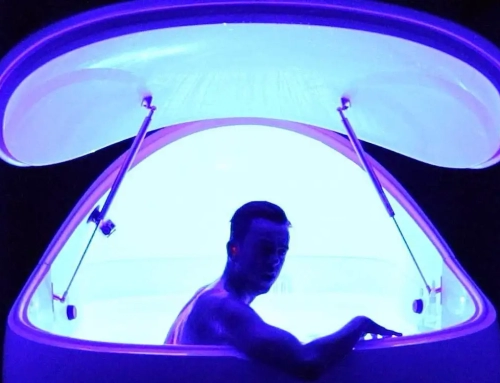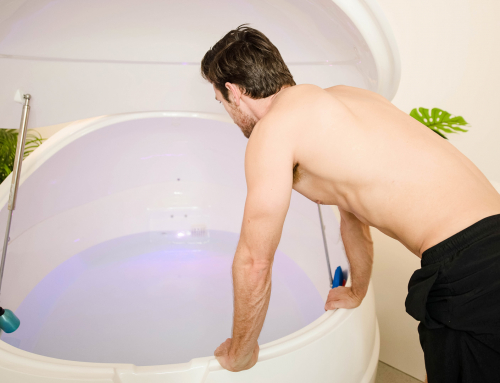For some it is a place of perfect isolation and pure retreat, free from all distractions of the outside world.
Key points:
- Sensory deprivation tanks are filled with warm water and designed to be floated in
- They are most commonly used by athletes and pregnant women for physical relaxation
- But experts warn they should not be used as a sole treatment plan for people with PTSD
Sensory deprivation tanks have existed in various forms for decades, offering users the chance to seal themselves off in a tank of pure darkness and silence.
The tanks — filled with warm, salty water ideal for floating — often have a roof that can be closed to ensure no light or sound can enter.
Most commonly they have been used by athletes, pregnant women and people with muscle injuries as a form of relaxation.
But, while they have fluctuated in popularity, operators of float-tank businesses have seen more people, particularly veterans and first-responders, use the tanks to help with PTSD.
The approach is not without controversy — bodies like the Australian Defence Force, the Department of Veterans Affairs and the Australian Federal Police suggest those with PTSD turn to conventional, evidence-based treatments first.
Veterans Affairs further warns sensory deprivation can lead to an “emotional, unconscious reaction in the patient that brings back a painful situation previously experienced”.
Shane Greentree, psychology services director at Soldier On, said anyone looking at float therapy should be informed and sceptical.
But he said there was clearly demand in the area for these kinds of alternative treatments.
“We know that the talking therapies alone are not necessarily sufficient, and we need to look at options to provide people that are really holistic,” he said.
The first eyes on an unfolding tragedy
At the height of political controversy around illegal boat arrivals, a boat later known as SIEV 221 arrived at Christmas Island in the early hours of December 15, 2010 in huge seas.
It was smashed into rocks near Flying Fish Cove, killing 35 adults and 15 children — all Iraqi and Iranian asylum seekers.
Some others were rescued.
The boat was not detected by Australian authorities prior to its arrival due to monsoonal weather, leaving Christmas Island residents to raise the alarm.
AFP officer Paul James, stationed on Christmas Island at the time, was on the shore as the tragedy unfolded.
He said he did not immediately appreciate the toll it took on his mental wellbeing.
“I was the first uniformed responder to that incident,” he said.
“From there, I didn’t realise what had occurred, because obviously you’re not thinking about it at the time.”
He said it was not until four months later that he spoke to anyone about it.
“My wife Elloise decided ‘no, I’ve had enough, we need to go speak to a doctor, you’re not the person you were’,” he said.
“From there I was diagnosed with PTS.”
Mr James went through a range of conventional treatments, but said in recent years, he had found more success through alternatives — like sport, and sensory deprivation.
“It’s not like I use it as a medicinal type thing … I suppose if you were to sit in a sauna, or get a massage, or meditate or something like that, you could use it as a parallel to one of those processes,” he said.
“It is a holistic approach, because your mind is working as well as your body.”
Early days in an emerging science
Mr Greentree from Soldier On acknowledged that not everyone would find what they were looking for in conventional treatments for PTSD, but he said most would find some good in it.
“About a third of people have an excellent response, we kind of consider that a full recovery,” he said.
“Another third have really positive responses, so reduction in the acuteness of symptoms, and good progress along the way.
“And another third may not respond to the treatment, or tolerate the treatment.
“So we know that there is a significant proportion of people that either don’t respond to the treatment, or access the treatment.”
Sensory deprivation treatment was most commonly considered alongside other alternative treatments, like equine therapy, use of assistance dogs, adventure-based recovery and yoga.
Mr Greentree said some of those treatments were showing positive signs of helping people improve their general wellbeing, but they should not be relied upon alone.
“There’s not the evidence to see them as a standalone treatment,” he said.
“A lot of these alternatives are better considered as an adjunct to the traditional treatment.
“So they might improve people’s emotion regulation, or increase relaxation to a point where they can then access treatments that we know are effective at treating PTSD more comprehensively.”
Mr Greentree said sealing oneself in a pitch-black, silent tank was obviously an unusual experience, and there was the risk it could trigger an unexpected response.
He said that was something that also needed to be considered, before giving the therapy a try.
“There are some real risks that need to be considered, and that’s up to the individual to consider and also to talk through with their GP or mental health professional,” he said.
By Tom Lowrey









